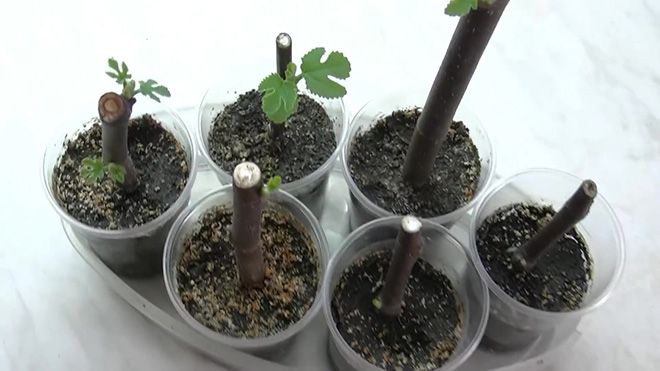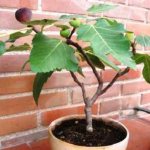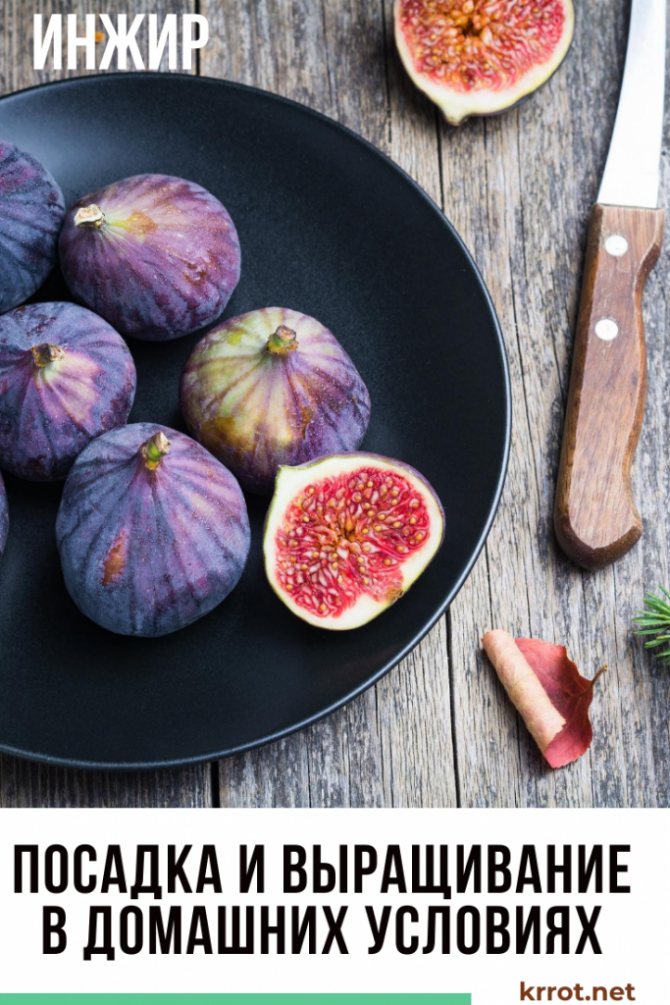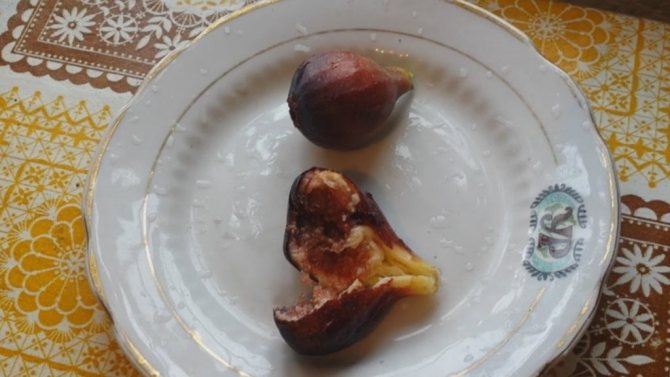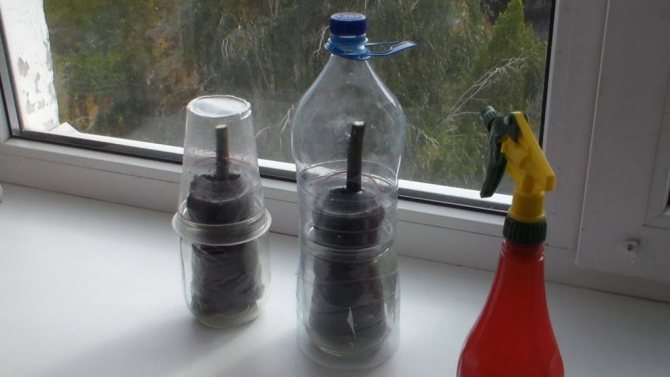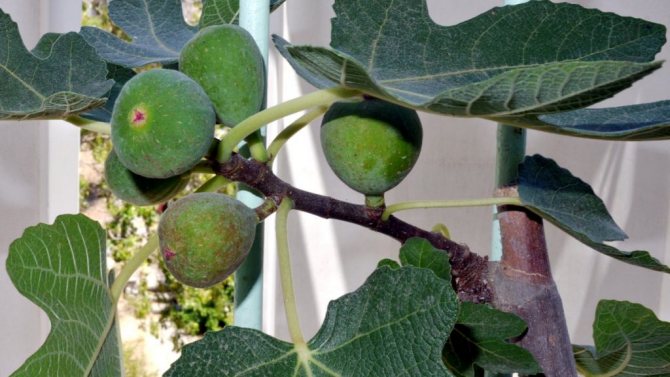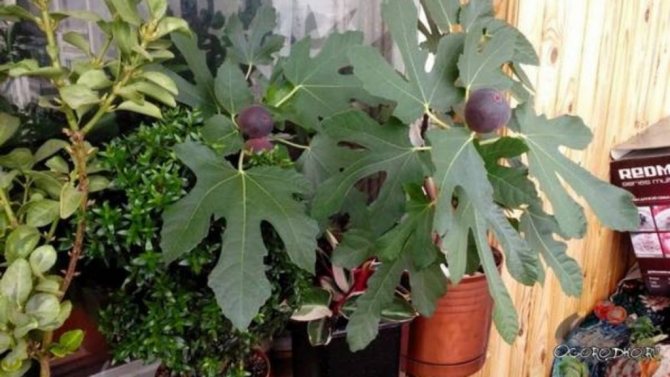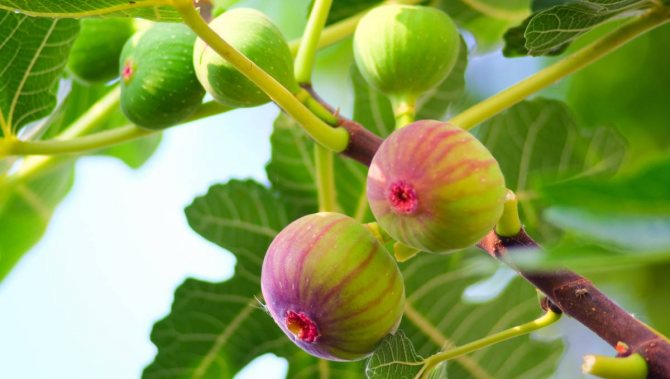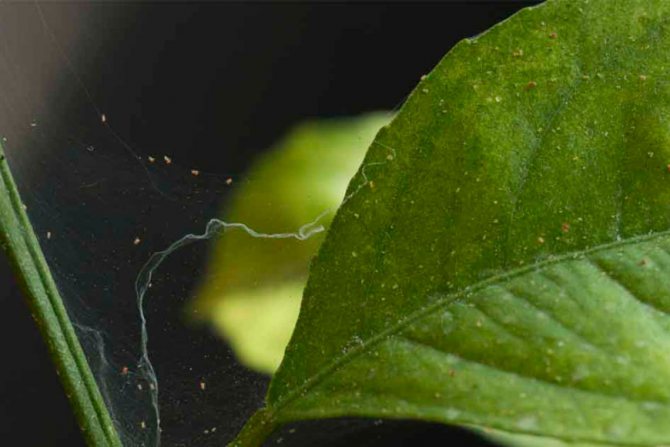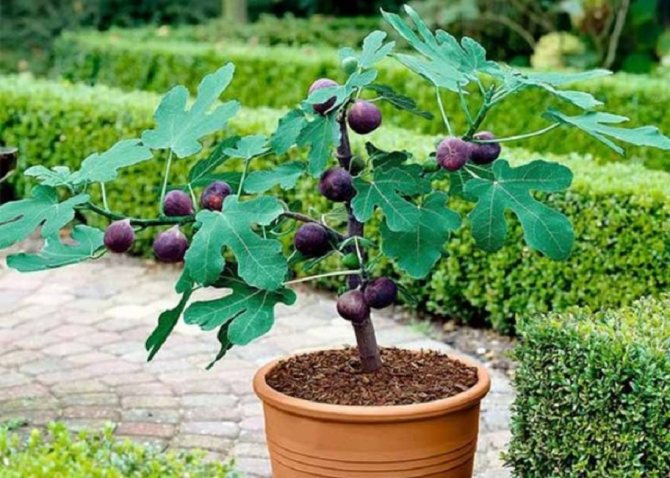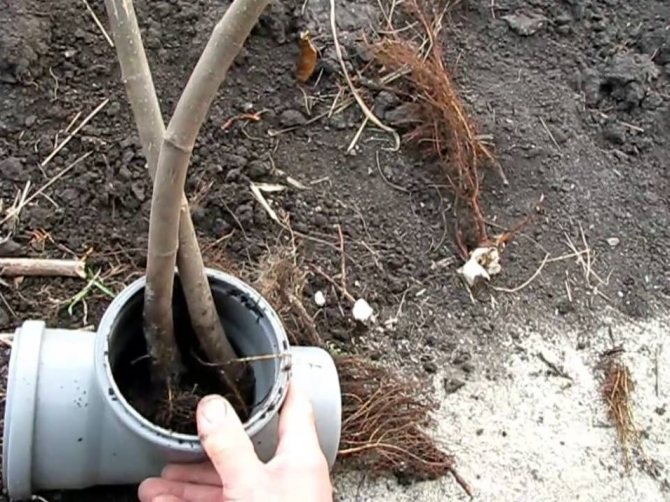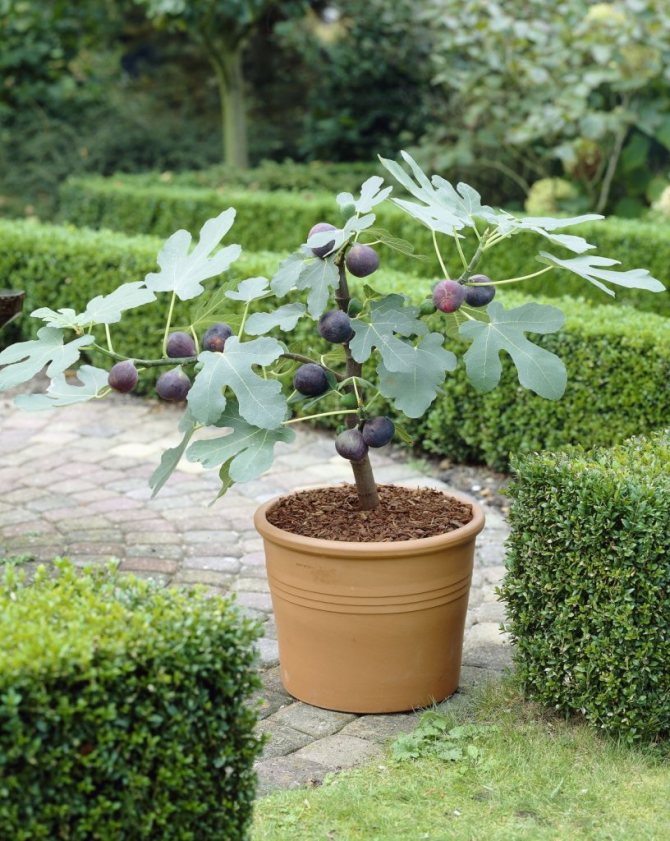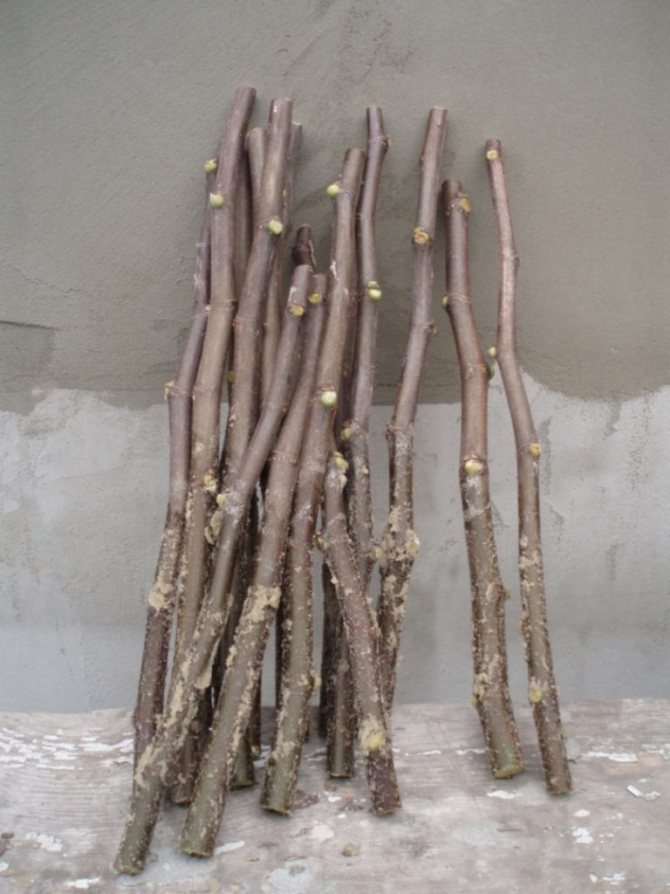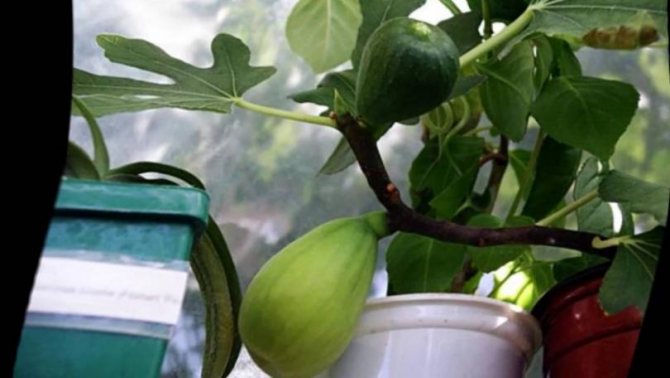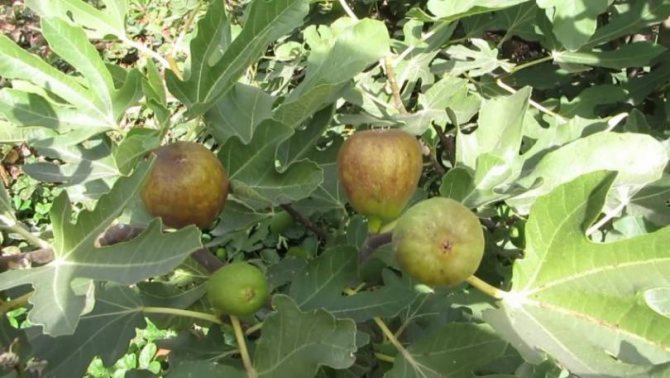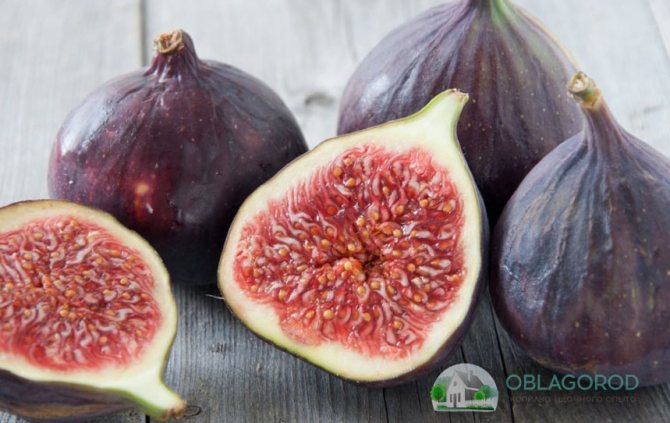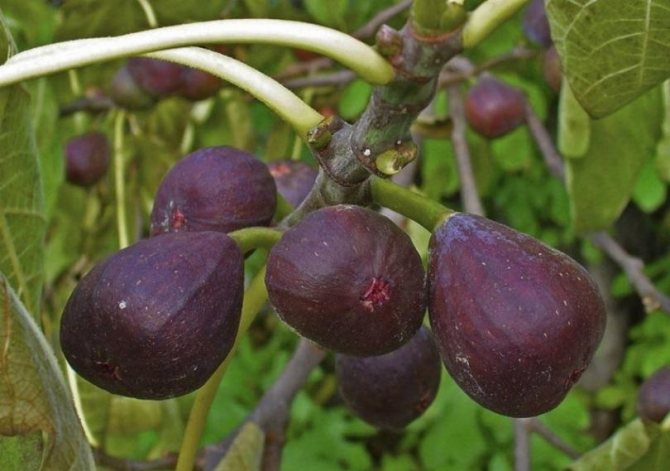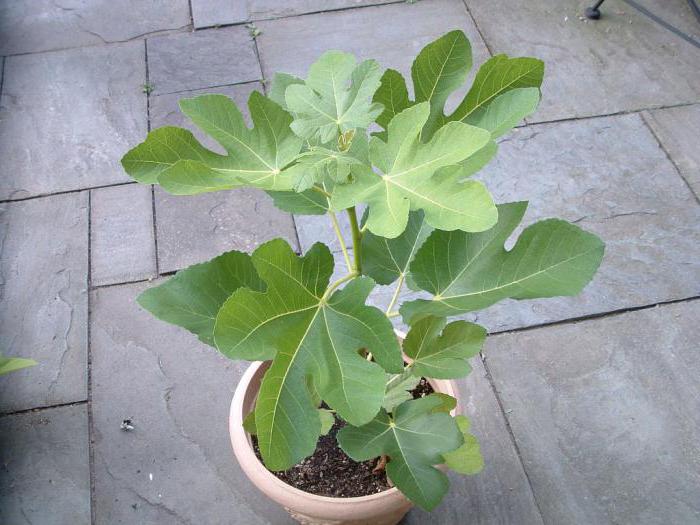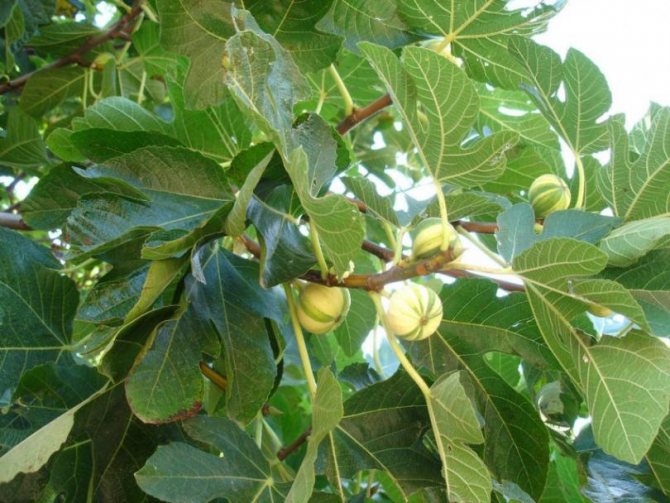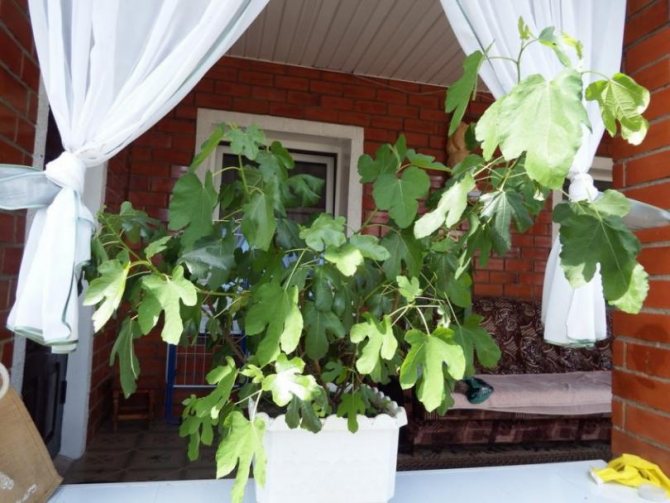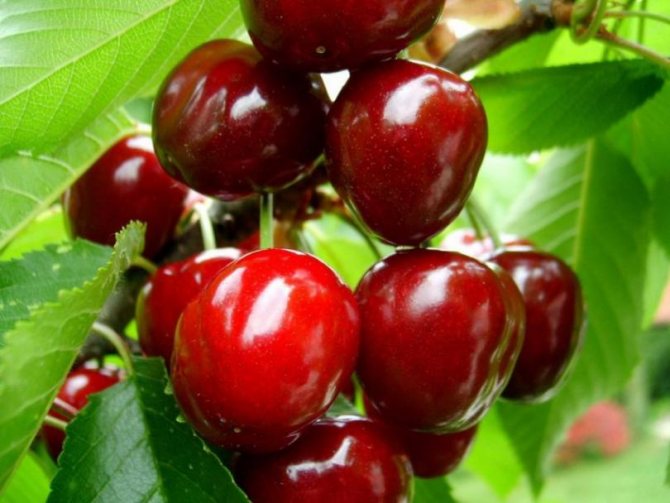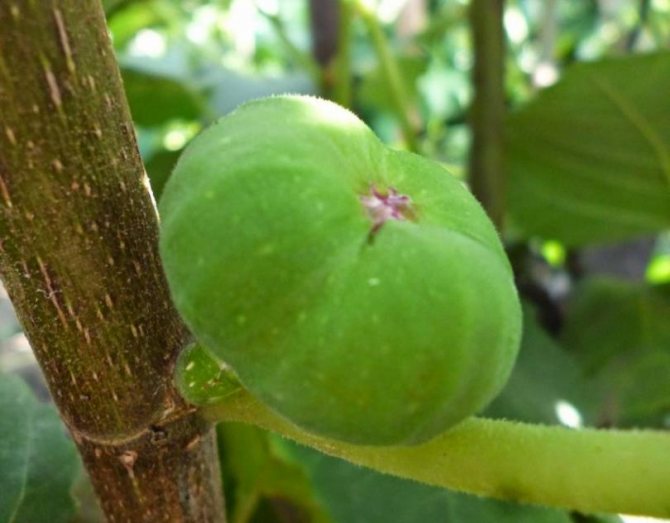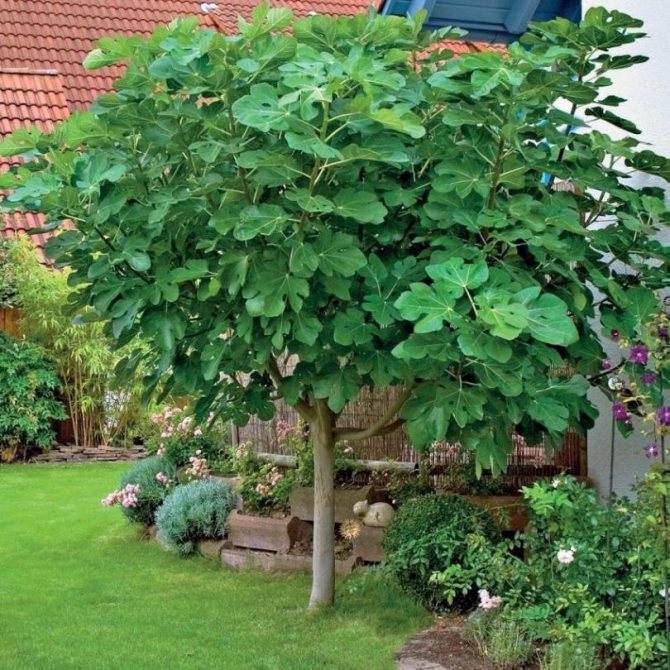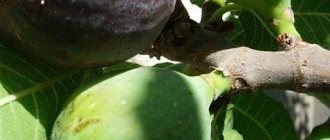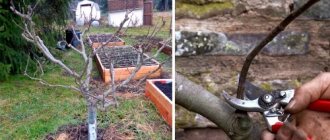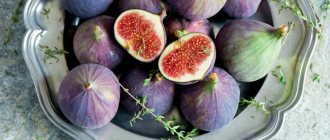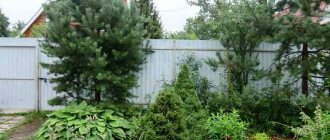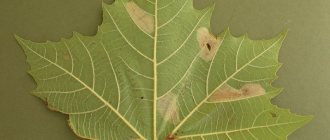There is nothing complicated about how to grow figs. This bright representative of deciduous ficuses reproduces in two ways:
- cuttings;
- seeds.
Is it possible to grow figs in your home
Before you start growing an exotic plant, you should choose the right variety and take care of creating favorable conditions. When choosing a seedling, it should be borne in mind that this tree can be:
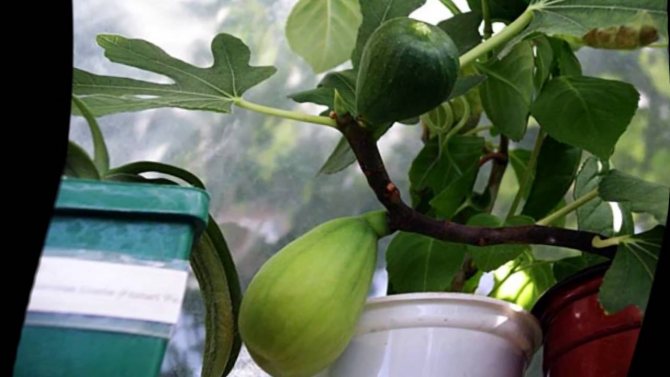
Fig tree
- self-fertile;
- self-fruitless.
In the climatic conditions of Russia, it is almost impossible to find a pollinator plant, therefore flower growers recommend giving preference to self-fertile varieties of exotic culture.
Also, when choosing varieties, you should pay attention to their height. Indeed, in nature, this tree reaches a height of 11-12 m. And for growing at home, exceptionally low-growing varieties of figs are suitable.
For reference! Figs are also called Fig, Fig Tree, Common Fig or Fig.
If the seedlings were purchased in the spring, they can be dropped in the garden or in the garden along with the container. With the onset of autumn, the figs are dug up and transferred to a room in which they are grown as a houseplant.
They have proven themselves excellently when growing varieties in an apartment by the type:
- Dalmatians;
- Sarah Apsheronskaya;
- White Adriatic.
When purchasing seedlings, it is important to familiarize yourself with the main features of growing a fig tree. You should also study the information on how to care for figs.
- In the first 12 months after planting, the exotic crop blooms, but no fruit is expected at this time. The first harvest can only be expected in the second year.
- Florists recommend propagating an exotic culture by grafting. Cuttings should be rooted in a container filled with light soil. Seedlings are transplanted as needed, at the time of the germination of the root system through the earthen lump.
- Low-growing varieties like Doree and Dalmatie are transplanted only once every 3-4 years.
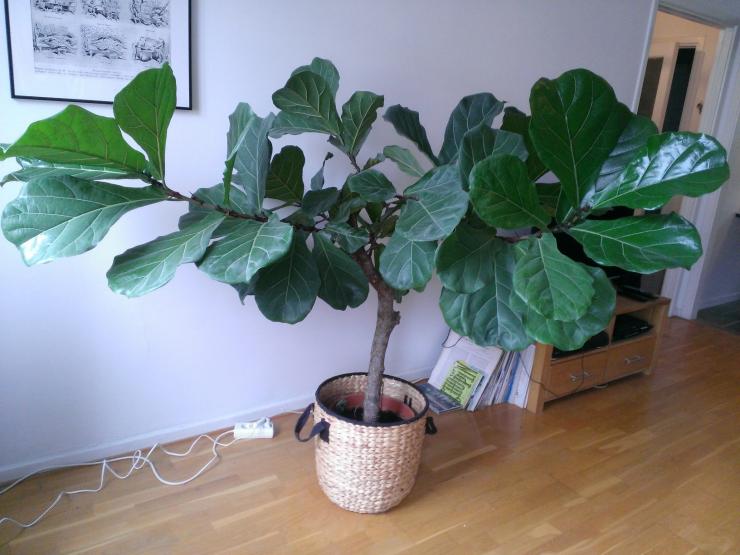

Growing an exotic tree indoors
Figs: growing at home
Proper planting and caring for figs will allow the grower to grow a healthy tree that will delight with abundant fruiting.
How to grow a fig tree from a bone
Figs - care and cultivation in the open field, pruning
How to grow figs at home from a stone? Below is a step-by-step guide to growing a fig tree.
- For planting, bones are used, which have been thoroughly washed and dried.
- The container is filled with light soil mixed with sand, leaf earth and peat.
- Depressions should be made in the ground in which the bones can be placed.
- A layer of peat is poured over the buried bones.
- The container is covered with a piece of glass or polyethylene material and placed on the windowsill.
- As soon as shoots begin to appear, you can remove the glass from the container.
- The appearance of a 4-leaf plate on seedlings signals the need to transplant young plants into separate pots.
Note! Most often they are engaged in the cultivation of figs in the middle lane.
How to grow a fig tree from a cutting
How to propagate figs by cuttings? To use this method, it is recommended to prepare ripe branches of a fruiting fig tree. The rooting process is best carried out at the end of winter, until the moment when the exotic culture sheds foliage and grows overgrown with young branches.
For reproduction, cuttings with 4 buds are selected. Their length should be up to 15 cm. Cutting is done with a sharp knife.
Step-by-step process for growing a fig tree from cuttings:
- The cut edges of the harvested cuttings are dried in the attic throughout the day.
- In the lower area of the scraps, 2-3 cuts should be made, which will accelerate the formation of the root system.
- Pre-prepared containers are filled with a layer of soil and peat. It is also advisable to add some sand.
- Cuttings deepen into the soil mixture to a depth of 2-3 cm.
- The soil is moistened, and the cut branches are covered with a jar.
- As soon as the root system appears on the cuttings, the seedlings can be transplanted into separate pots.
The soil for planting is prepared independently. It includes sod land, peat, humus, sand and black earth. Indoor figs can be planted in spacious containers during the period when the roots begin to grow strongly and fill all the space in the container.
Growing figs from a cutting is a fairly simple process that even a novice florist can perform.
Note! Fig trees need systematic soil moisture. Against the background of a lack of moisture, the leaf plates roll up and fall off.
Preparation of planting material
Thus, the trenching technique is perhaps the only technology by which in the middle lane it is possible to obtain good yields from such a heat-demanding crop as figs. In the Moscow region, the cultivation of a fig tree is most often done in this way. The trenching technique allows you to preserve trees in the harsh climate of Russia, even in the most severe frosts.
For planting on the site, figs should be sown in boxes in February-March. The grown seedlings are transferred to the street at the beginning of June, after the last frosts have left.
Figs that are too small in a trench will of course not receive enough sunlight. Therefore, before transferring the seedlings to their permanent "place of residence", it is worth growing a little. For this, fig sprouts are first transferred from boxes to tubs. The latter are placed in the sunniest place on the site. For the winter, tubs with figs are brought into the basement. The next year, in spring or autumn, trees can be planted directly into the trench.
How to care for a house tree
Bonsai maple - growing from seeds at home
Figs should be taken care of throughout the year. In the summer months, it is advisable to spray the trunk and leaf plates. The water for irrigation is settled. Frequent spraying helps prevent spider mites.
Important! During fruit formation, the frequency of watering is reduced, which will prevent the fruit from becoming watery.
An exotic culture also needs a dormant period. To this end, experts in the field of floriculture recommend moving trees from November to January to an insulated balcony or to another cool room, the temperature in which is in the range of 0-10 ° C. It should be borne in mind that you cannot take the fig tree out into the cold.
During the dormant period, the plant does not need additional lighting. At this time, the leaf plates fall off. It is recommended to water the fig tree as the top layer of the soil dries out.To prevent early awakening of the kidneys, moisten the soil in pots with cool water.
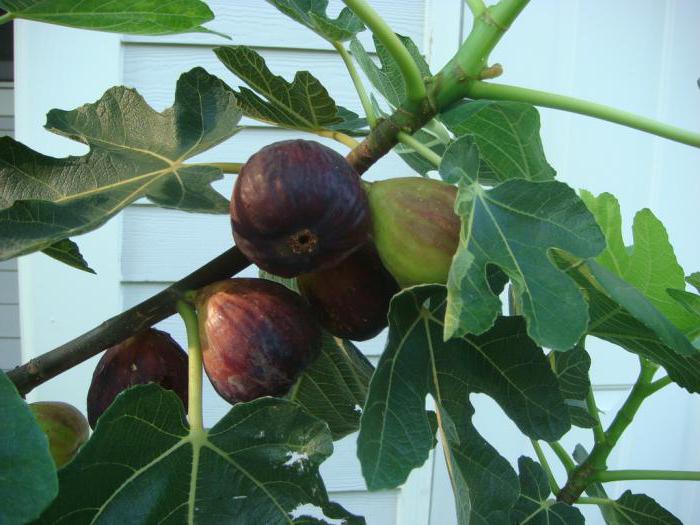

Fig fruit
When the tree begins to wake up, its buds will swell. At this point, the exotic culture is brought into a well-lit room. Top dressing is applied to the soil.
In order for the fig tree to begin to bear fruit abundantly and develop rapidly, nitrogenous fertilizers should be applied to the soil. Also, at the moment of awakening, the florist must make a top dressing, which includes phosphorus.
Important! The root system of figs grows rapidly, so it is recommended to replant the tree systematically.
The transplant is carried out in the spring months until the leaf plates are formed on the tree. The planting container should be larger than the previous pot. On the surface of the bottom of the container, a drainage layer is poured, which is ideal for expanded clay.
When transplanting a fig tree, it is important to place the root system in the pot so that the root collar remains on the surface of the soil. After transplanting, the pot is transferred to an area well-lit by the sun's rays.
Pruning
Experienced growers say that when growing figs, it is important to systematically carry out the pruning procedure in order to form the crown.
Pruning should be done before the plant wakes up. A young fig tree should have only 4 well-developed branches. The rest can be deleted without regret.
As soon as the height of the tree reaches 30 cm, you can stimulate the development of lateral shoots by pinching the top. If there are already side branches, their length is shortened by 1/3. This shortening allows the lower shoots to become more powerful in size and strengthen even more. When performing the crown formation procedure, it is important to ensure that the upper buds are in the direction of the sides, and not in the central part of the crown.
Note! Correctly and regularly pruning, you can achieve the creation of a gorgeous crown, which will consist of 4 vertically directed and a large number of side branches.
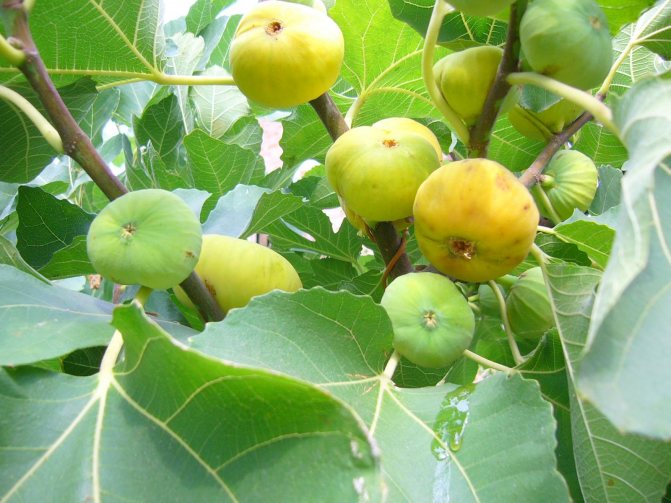

Fruit formation
If you follow all the rules for caring for an exotic plant, you can achieve an increase in fruiting. Figs bring 1 or 2 harvests annually. The first phase of the harvest differs in that the fruits are formed on last year's branches, and in the second phase, the fruits are concentrated on young shoots. The first harvesting phase begins in mid-summer, the second harvesting phase begins closer to September 10-15.
As they ripen, the fruits become more and more juicy. Gradually, juice begins to stand out from the peephole, which has a sweetish taste.
Planting cuttings
The best time to cut cuttings from an adult fig is early spring, when the leaves on the plant have not yet blossomed. But summer landing is also practiced. The length of the cut shoots should be no more than 15 cm, and the optimal number of buds on them is 3-4. Lignified and green cuttings root equally well. From the bottom, the cut is made oblique, stepping back 1-1.5 cm from the extreme kidney. From above, it should be flat. The correct distance from the bud to the top of the cutting is 1 cm.
Advice
In order for the cut branch to take root faster, its lower part is slightly scratched with a sharp knife, leaving longitudinal marks.
Fresh cuttings are kept for 5-6 hours in a cool and dry room. During this time, the milky juice that is released from the wounds should dry out. Having prepared a solution of an organic growth stimulant, cuttings are placed in it. After 10-12 hours, they can be planted in a pot.
Fig roots are afraid of excessive moisture, so the bottom of the container is covered with a drainage layer, the thickness of which is 1 cm. Next, the pot is filled with a nutritious substrate. It is pre-steamed to disinfect it.
If the soil mixture for figs is prepared independently, the following components are taken for it in a ratio of 2: 1: 1:
- leaf humus;
- turf;
- sand.
The soil layer should be 6 cm. From above it is covered with 3-4 cm of calcined and purified river sand. Having abundantly moistened the substrate, shallow (3 cm) planting pits are made, leaving 8 cm of free space between them. After dipping the cutting into wood ash, place it in the hole. The sand near the future trunk of the figs is compacted by pressing well with your fingers. The planted cuttings and the surface of the substrate are sprayed with water from a spray bottle. If individual pots were used, place a cut plastic bottle or glass jar on top. When landing in boxes, they make a kind of greenhouse, constructing a wire frame and covering it with film.
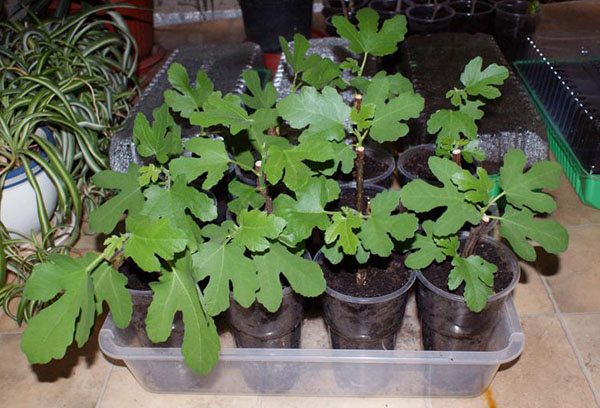

Reproduction of figs
Fuchsia - growing and care at home
As mentioned above, figs can be propagated by seed, with the help of seeds and by cuttings. However, most owners clearly prefer the latter option.
When choosing a method of propagation by cuttings, you should familiarize yourself with the features of this event, presented below:
- When harvesting cuttings, the florist should give preference to lignified shoots. It is better to postpone the harvesting process until autumn.
- Cuttings prepared in this way are dried and sent to storage in the basement until spring.
- Blanks are buried in the ground or stored in boxes filled with wet sand. To prevent excess moisture from getting to the cuttings, it is recommended to first wrap them with a layer of fabric.
- Planting of cuttings is carried out, as a rule, in April. In this case, it is important to bury the workpiece in the soil so that only 1 bud remains on the surface of the soil.
If there is a need for propagation of figs in the summer, it is worth giving preference to the method of propagation by layering. For this, a healthy tree is selected, the selected shoots of which are bent to the container located next to it and sprinkled with a layer of soil. The soil is systematically moistened abundantly.
As soon as the root system is formed on the layer, you can cut off the shoot from the tree and transplant the seedling into a new pot. After that, it is important to read the information on how to grow figs further. It is possible to plant a fig tree in open ground only for the summer period.
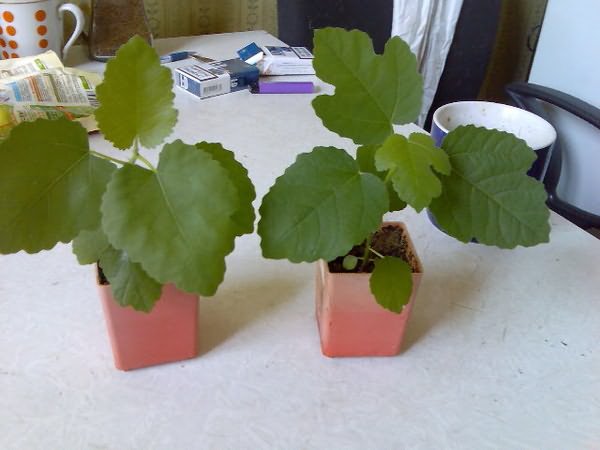

Growing a fig tree from seed
Flowering and fruiting
Fig belongs to the category of dioecious plants. On the female plant, the formation of inflorescences (syconia) is observed, the flowers of which are distinguished by the presence of long or short columns. Small inflorescences form on the male tree.
It is interesting! In nature, the culture is pollinated due to the fact that the female blastophagus visits male flowers, and then enters the female inflorescences, trying to postpone clutches. Pollen from the legs of females falls on flowers and pollinates them. Insects that live in the plant and feed on it make it possible to achieve fruiting.
Growing figs at home in a pot allows you to enjoy the unique taste of the fruit that can be removed from your plant. But for this you must definitely choose a self-pollinated variety.
The harvest is formed in 2 stages - in the middle of summer and in the middle of September. To achieve maximum yield, it is important to properly care for indoor plants, timely feeding and moisturizing the soil. You should also regularly transplant figs into a pot that has a larger volume than the previous one.
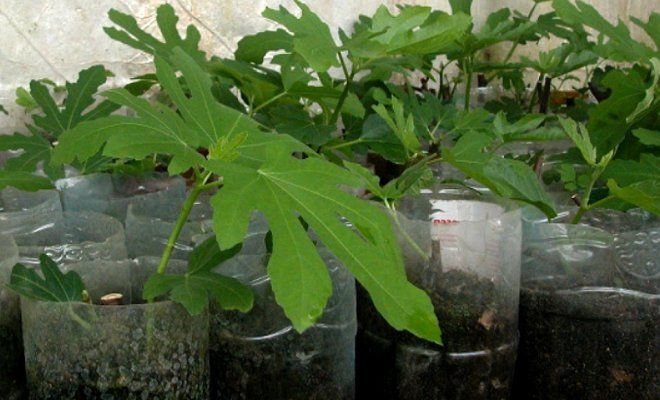

Growing figs from cuttings
Expert advice
It is important to treat all plants with love and grow seedlings with special care. It is necessary to follow the rules of systematic watering and hilling. It is important to fertilize the plant periodically.The grafted branches must be especially carefully looked after. With the right approach and following all the recommendations with a 99% guarantee, there will be a fruitful fig tree in the garden.
Fertilize rooted figs when they bloom and form fruit. Organic and mineral compositions are suitable for it. The fig tree responds well to such fertilizers:
- infused slurry;
- wood ash;
- weed fertilizer.
They are brought in with a break of 2 weeks. It is worth feeding the tree at the beginning of the growing season. When his buds begin to wake up, the figs are watered with infused manure. After 2 weeks, apply a liquid mineral fertilizer containing a lot of phosphorus and nitrogen. The color of the leaves of figs will be brighter and more intense if fertilized with iron vitriol. They do this twice a year - in spring and summer.
